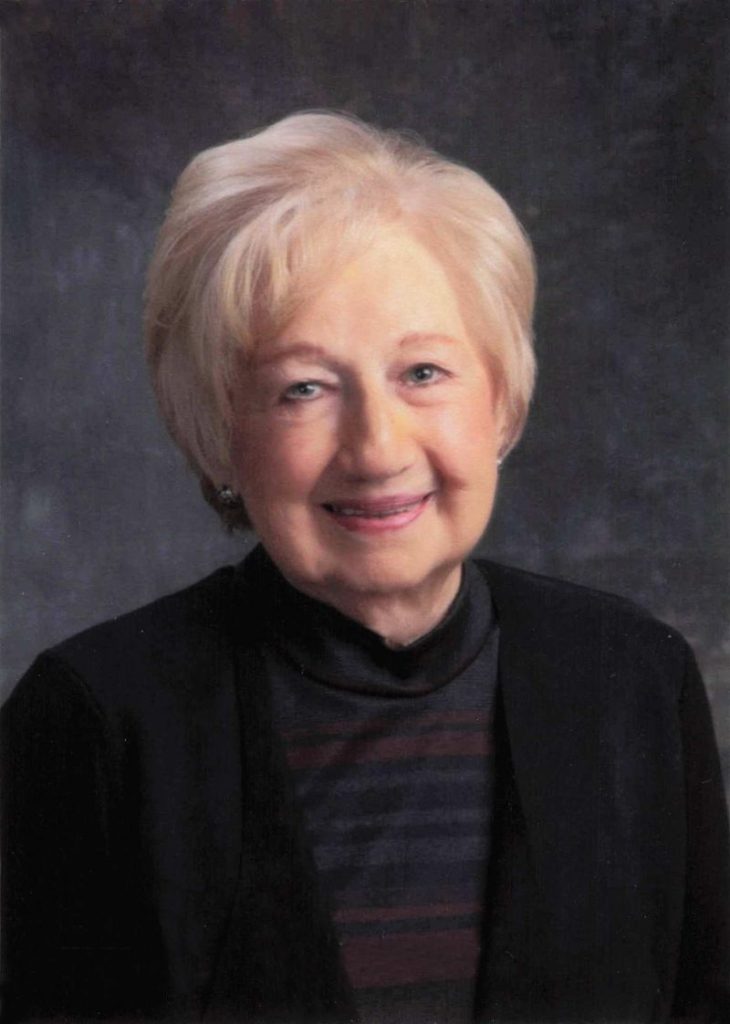The St. Francis School Fire of 1899: A City Mourns
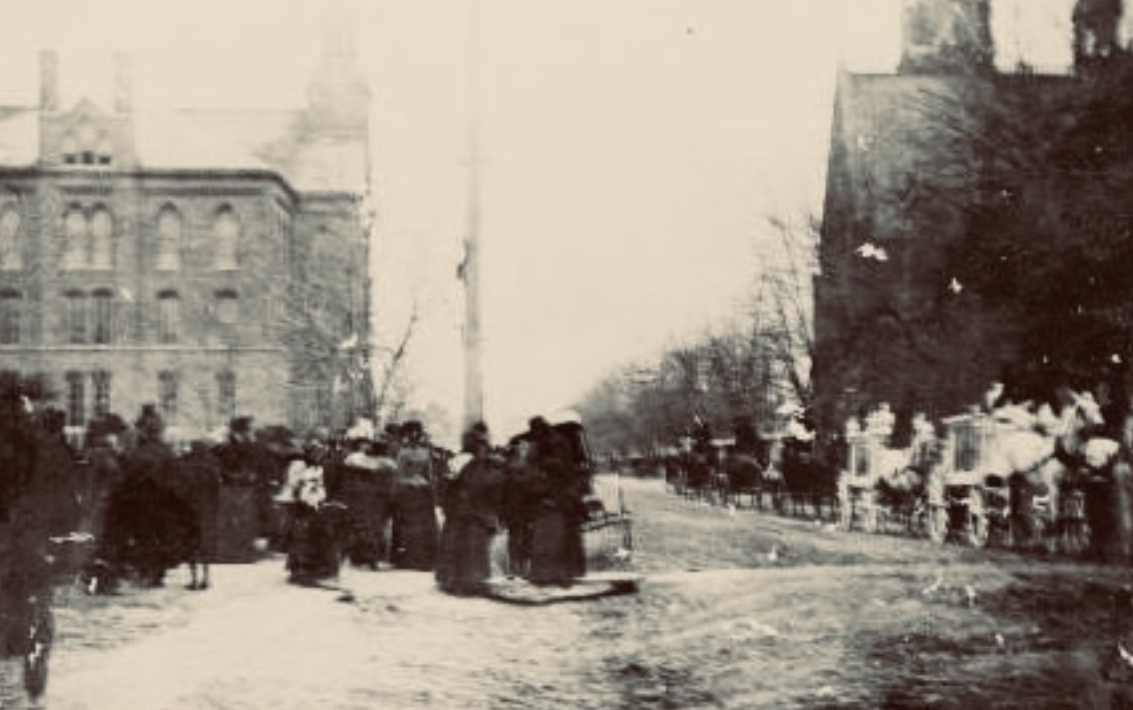
(This is the fifth of six stories about the St. Francis School fire in December 1899, when 12 girls burned to death in one of saddest chapters of the Quincy community’s history.)
Read Part 1: Prosperous Quincy of 1899
Read Part 2: Christmas is Coming to Quincy
Read Part 4: Gripping Disaster
The town mourns as it prepares to bury the dead lost in the St. Francis School fire.
There were shortages of everything except grief. There were not enough coffins in town of the right size and more had to be built. The florist shops could not fill all the orders, not even by bringing flowers in from neighboring towns and hiring extra help. There were only seven hearses in town, two white and five black, so the procession to the cemetery had to be made twice. Mary Freiburg, the undertaker’s wife, stayed up all Friday night sewing the satin linings for the caskets.
When The Quincy Daily Journal was delivered to homes and newsstands the next day, on Saturday, December 23rd, the article “Tragedy at St. Francis School” listed the dead as follows, last names that remain well recognized in Quincy:
- IRENE FREIBURG, daughter of J.F.C. Freiburg, 1432 Broadway.
- JOSEPHINE BOHNE, daughter of Henry Bohne, 1107 Lind.
- BERNADINA FREUND, daughter of Joseph Freund, 505 North Thirteenth.
- MARY HICKEY, daughter of John Hickey, 2231 Vine.
- WILHELMINA KOTTENDORF, daughter of Joseph Kottendorf, 2035 Cherry.
- COLLETTA MIDDENDORF, daughter of W.H. Middendorf, 1322 Lind.
- OLIVIA TIMPE, daughter of Prof. W.T. Timpe, 1805 Elm.
- MARY WAVERING, daughter of Anton Wavering, 1116 Elm.
- MARY ALTHOFF, daughter ofJ.H. Althoff, 1628 Spring.
- MARGARET WERNER, daughter of John Werner, 1313 Spring.
- MARY FUTTERER, daughter of Charles Futterer, Twenty-fifth and Broadway.
- CELIA VONDERHAAR, daughter of George VonderHaar, Fourteenth and Spring.
The mothers’ names were not listed.
Because the thinking of the times was that it would be too much of an emotional strain on the women, the fathers brought the necessary items to the funeral home. All during the morning on Saturday, bereft fathers carried dresses and stockings and shoes to the Freiburg Funeral Home. Late in the afternoon, on Saturday, December 23rd, the doors were opened to visitors. More than 5,000 people filed past the coffins to look upon the girls. The next morning, each child was taken to her home.
The funeral was the afternoon of Sunday, December 24th, Christmas Eve. The church front and the school building were draped in black crepe, as were each of the homes that had been visited by death. At the attic window of the school was a United States flag heavily draped.
Early in the afternoon, the hearses began to arrive.
The two white hearses were used to bring the girls to the church. Each was drawn by two white horses. The drivers dressed in black and wore black hats. Through the glass sides of the hearses, the small white caskets could be seen, covered with flowers.
People lined the streets to pay their respects as the hearses passed. The caskets arrived one by one. Upon each arrival, the church bells tolled.
Wilhelmina Kottendorf was brought first. The rest of the girls were brought according to the distance from the church, those who lived farthest arriving first. Mary Hickey was the last to be brought to the church, as her funeral was handled by the Duker Funeral Home, not the Freiburg.
As each casket was carried up the aisle to the communion railing, Professor Oscar Huck played Schurz’s funeral march. The 500 children of St. Francis School, seated together, chanted a prayer. The coffins were placed in twos, beginning at the communion railing and extending sixty feet back the aisle. A Franciscan father placed two candles on each coffin. And on this occasion, Father Andrew broke the rule prohibiting flowers to be brought into the church. Anything that would please the parents of the dead children was permitted.
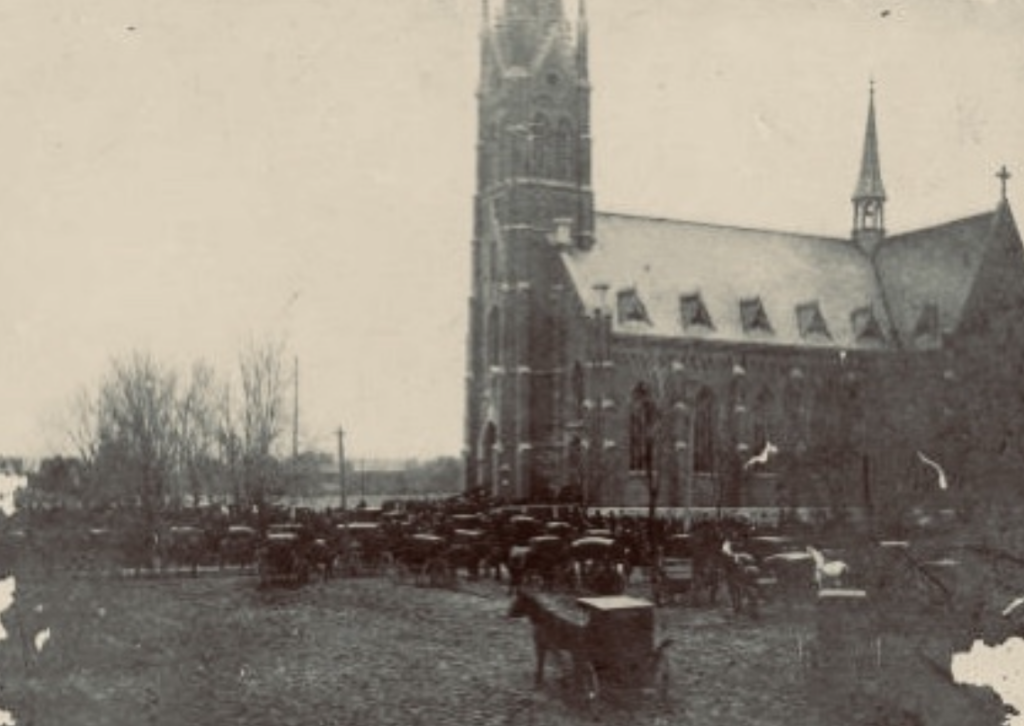
By 1:00 p.m., a large crowd had gathered outside of the church. But no one was admitted except the mourning relatives – mothers, fathers, grandmothers, grandfathers, brothers and sisters – who formed a group of about 600, and the 500 school children.
The sound of weeping and sobbing and moaning filled the sanctuary as has never been heard before or since. Families watched the pallbearers carry the coffin of their precious little ones into the church. Lillian and Clara Koesyan watched as the coffins of their friends – the girls who just two days earlier had been so happy and excited – passed by them. When the last casket arrived, the doors were opened and the church was quickly filled. Two thousand were seated and another thousand packed the side aisles, the gallery, and the steps leading up to it. Outside, another three thousand stood in the bitter cold.
At 3:00 p.m., the choir and the priests sang the Miserere. Father Andrew – his badly burned left hand heavily bandaged in black -– blessed the bodies and gave a short sermon. He spoke in German and broke down twice. The Franciscan fathers, expecting that he might collapse, stood ready to take over. But Father Andrew said that even if it proved the last act of his life, he would do the service. And he did.
“My dearly beloved parents and fellow mourners,” he said.
He continued:
“What can I say to console you? I hardly know what to say in this our sad bereavement. Many have sent their condolences and offer their prayers in this our sad fate. But we need more than this. We must look for supernatural strength and assistance. We must look to God and it is in him we must find our sympathy. In the last suffering of our dear little ones, God seemed to say to them after this suffering you shall have and enjoy eternal rest and pleasure. Now they are in heaven and will celebrate with God almighty, and in this, dear parents, you and I find our sympathy. We know they celebrate a glorious Christmas with God and will shower their prayers and Christmas wishes upon us.”
At the close of the service, Father Andrew walked to the front entrance of the church and offered the last prayer. Then they began to remove the caskets one by one. Outside, the mercury had dropped 10 degrees over two hours. It had begun to snow, but not the gentle Christmas snow Clara and Lillian had hoped for. The snow came down as icy sleet and a fierce wind drove it into people’s faces like sharp knives.
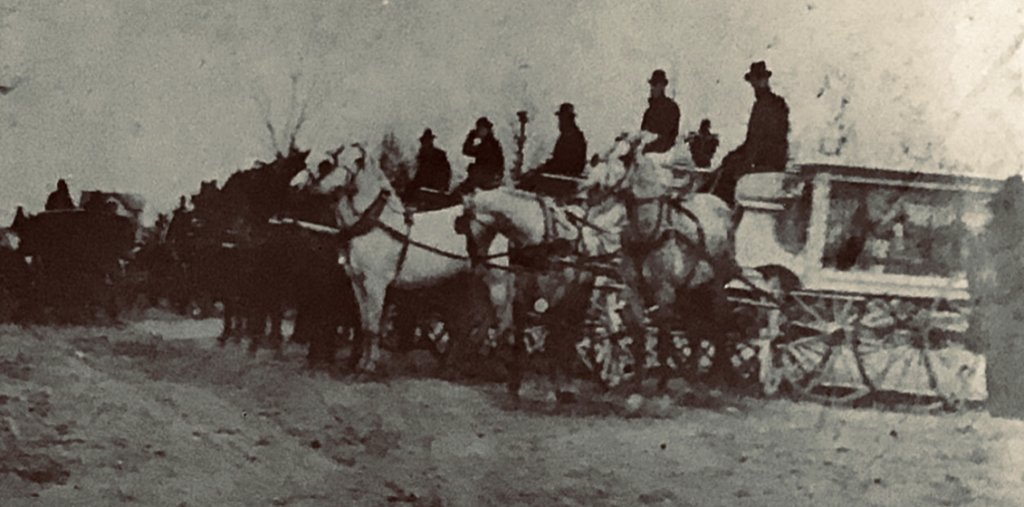
The trip to the cemetery had to be made twice. Mary Wavering’s was the first casket to be carried from the church, following in succession down the aisle, until the six hearses were filled.
Then they headed for the cemetery. At 18th and Broadway, the cortege turned south on 18th Street, toward St. Boniface Cemetery. Here the remains of Mary Hickey continued east to the St. Peter’s Cemetery, where a large crowd gathered for her interment. In 1899, the Germans and Irish did not bury together.
Following these first six hearses was a procession on foot composed of Father Andrew, his assistant priests in their vestments, the acolytes, the Franciscan fathers, the school children of St. Francis School, who continued to chant, the faculty of St. Francis College and college students who had not gone home for the holiday. Following this long column were 36 carriages filled with mourners. Then the hearses returned to the church for the remaining six bodies and returned as quickly as they could. By the time they got back, more than 5,000 people surrounded the cemetery plot in a sea of black.
The 11 children were buried in a lot on the north side of the cemetery that measured 16 x 32 feet. There was a three-foot aisle down the center and eight graves on each side. Space was left for the three other girls who had been badly burned, because no one knew at this point whether they would live or die.
Each casket was set over a grave and Father Andrew prayed the Benedictus, while the Franciscan fathers and brothers did the same. Above the heads of the mourners, 14 white pigeons flew in a continuous circle for at least five minutes before taking flight to the north. The Lord’s prayer was chanted and one by one, the coffins were lowered into the ground.
The newspaper reported that this was “a scene that touched the strongest hearts. The agony of the weeping mothers, moaning fathers, together with the sobs of the other relatives, was painful to all spectators, many of whom had to turn from this heartbreaking scene.” It was after 5:00 p.m., and already dark, by the time the last of the mourners left the cemetery.
What happened next is hard to say, because none of the newspaper articles tell us what went on in the homes of the bereaved that Christmas Eve. We can assume that the families did what we all do in times of grief. They held each other, cried together, leaned on their friends and loved ones for support, and waited for time to ease the pain.
Newspaper articles began with “Words are absolutely powerless to express the emotions called forth …” and “No words can describe …” but the articles were full of words: agony, moaning, sobbing, … charred, incinerated … dreary, sad, pathetic … tragedy, sorrow, grief … courage, devotion, heroism. Finally, the journalists concluded that it was “the saddest Christmas eve ever known in the history of Quincy.” And it is safe to say there has been none sadder in the 100 years since.
It is clear that these deeply religious people turned to God. They had come to this country and this town with a deep belief that a merciful and compassionate God would guide them. They had given thanks to Him for their good fortune and abundance. Now they prayed to this same God for understanding.
“Not My Will but Thine be Done,” prayed Father Andrew as he closed the funeral service. Surely they must have struggled as they tried to answer the question “Why?” -– “Why these little girls?” But their faith ran deep. Some days later, Father Andrew wrote to Father Roger Middendorf: “On December 22nd, the child Jesus took twelve of our dear little ones with Him, in order to celebrate His blessed birthday with them in fairer regions. In this conviction rests my entire consolation.”
For those who have lost a child, they continue to ask “Why?” And struggle to find consolation.
By and copyright © Carolyn Freas Rapp
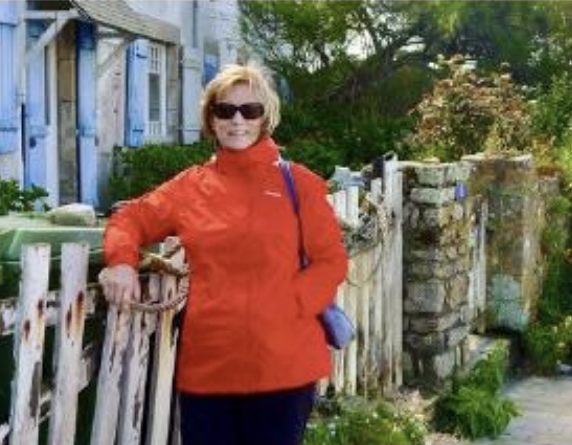
Carolyn Freas Rapp is a writer, storyteller, book lover, traveler, and mother of three grown children. She lives with her husband, Michael Rapp, in McLean, Virginia. She also is the author of Garden Voices: Stories of Women & Their Gardens, published by Water Dance Press.
Thanks to the Quincy Public Library for allowing use of images from the Quincy Area Historic Photo Collection.
Muddy River News is community journalism. Our Home. Our News. Storytelling is an important part of this. We welcome contributors to share stories and material of interest to the community. Email: news@muddyrivernews.com.
Miss Clipping Out Stories to Save for Later?
Click the Purchase Story button below to order a print of this story. We will print it for you on matte photo paper to keep forever.

